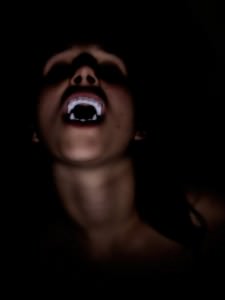Charmed into Being (Un)Human
The pleasure and growing popularity of suspending disbelief
By Shruti Desai, Staff Writer
Kickin’ it in our imagination has hardly been more possible. Nor has it felt more real, accepted, and quite possibly, fundamental to daily life. In the thump of a heartbeat, you can be a vegetarian vampire, a pure-blood wizard, a hopelessly shirtless werewolf, a curly-haired hobbit, a meddlesome elf, or even – though consider it carefully – a human.
With post-graduate job-searching proving to be a full-time and often fruitless ordeal, I rather enjoy this on-demand flexibility and guaranteed exemption from meticulously dry-cleaned, starched, and ironed prerequisites. All I need is a novel, a film, a TV serial, or a videogame to pass hours in what literary theorists call ‘the subjunctive mood’ – that is, what could be. And if the last several years’ surge in sci-fi and fantasy programming is indicative, I’m not alone – nor does it appear I will be for some time.
Steal even a half-hearted glance (if you are, as I shamelessly am, detained by laziness) at the weekly television line-up, and you’ll notice signs that the sci-fi and fantasy genres seem to be breeding like rabbits. For many of us, shows like “Supernatural”, “Game of Thrones”, “Grimm”, “Being Human”, and “Teen Wolf” – all predicated to some extent on the suspension of disbelief – are welcomed complements to the sitcoms, reality shows, sports broadcasts, and newscasts that once dominated TV viewership.
[pullquote]
Maybe we aspire to escape or spice up our own realities.
[/pullquote]
Yet, if you can believe it, global fantasy fandom has benefitted from more than TV slots that maximise broadcast ratings and ad sales revenue. In its first two weeks at the box office, the vampire romance Twilight: Breaking Dawn – Part 1 reigned, generating $489.3 million in global ticket sales. The latest sequel adapted from Stephenie Meyer’s four-part story about werewolves and vampires also snagged the record for all-time 2nd best midnight debut and 5th all-time largest movie opening in the U.S. Taken with its three companion instalments, the phenom’s amassed just shy of $700 million worldwide.
Yawn. This release is merely the latest in a fast-growing lineage of fantasy and sci-fi blockbusters. According to The Telegraph, global market research firm Mintel reported that sales of sci-fi and fantasy books rose roughly 20% from 2005 to 2010. Think about how many box office kings – Chronicles of Narnia, Lord of the Rings, War of the Worlds, Coraline, Twilight, and Harry Potter, to name a few – owe their inception to a single novelist animating pages and screens.
And diehard fantasy fans would swiftly remind us here that, while most of us moviegoers were stunned by just how long (amazing, really) our bladders safeguarded the large Sprite we downed during the three-hour The Lord of the Rings movies, author J.R.R. Tolkien published the trilogy nearly a half-century – in the mid-1950s – before we invited it to our cinemas, Happy Meal toys, Halloween costumes, and print-screened birthday cakes.
What happened?
Maybe we aspire to escape or spice up our own realities. With economic turmoil nesting worldwide, that one could fly, heck, even soar – for awhile, too. But surely we are capable of personalising the hope for magical powers and alternate worlds for other reasons as well.
If ‘cult’ audiences themselves are becoming more mainstream, how have we in turn revised ourselves or conversely, the stories we tell?
[pullquote]
The plight of non-human beings, too, has become less alien.
[/pullquote]
Consider how portrayals of other-worldly endeavours, realms, and creatures have changed since the would-be ancient, though no less celebrated, runs of Back to the Future, Star Trek, “Knight Rider”, and “Dark Shadows”.
Stereotypical appearances, for one, seem to be dashing for media exits. From style-challenged, absent-minded scientist Dr. Emmett Brown, we leaped – in a cinematic blink – to Professor Albus Dumbledore, a poised wizard, even if eccentric in his phrasings and habits, who eventually graduated to elegant, flowing robes and John Frieda-infused frizz-free silk for hair. Who knew? Turns out that geeks, dorks, and nerds, once members of fashion’s lowest class, are redeemable.
The plight of non-human beings, too, has become less alien. We can empathise, for example, with Edward Cullen’s inability to control becoming a vampire, to choose his lot in life. Perhaps this is the reason we deem his triumphs – his unwavering commitment to Bella, his textbook morality, his uncompromising resolve to suppress his animalistic instincts – as more so noble, extraordinary, rare. And feverishly human in their intensity and sentiment.
We appreciate such character that trumps evil with not so evil. Dobby, a well-meaning but accident-prone elf, unconditionally saves Harry, time and again. Samwise Gamgee wields mere simplicity and loyalty to ward off lust for the ring and, more touching still, mortal dangers to Frodo.
We expand, just as well, to trace the contours of more shifty individuals. As much as we may loathe (or not) Lord Voldemort, we recognise the potential scars of childhood neglect, and equally, the whip of just making do (that the Weasleys endearingly and symbolically transcend). Even Smeagol and the Malfoys toe likeability.
By making the stories more about virtues like friendship, bravery, trust, and perseverance and less about the supernatural and magic that surround it – though these are central and defining features, the popularisation of these genres across media outlets has become as ‘human’ as it is ‘fantastic’.
Sci-fi and fantasy, to be sure, have always invented realities different from our own. But now they are beginning to sound, look, feel, and read as if they are more our own than they could ever be another’s.
ARB Team
Arbitrage Magazine
Business News with BITE.
Liked this post? Why not buy the ARB team a beer? Just click an ad or donate below (thank you!)
Liked this article? Hated it? Comment below and share your opinions with other ARB readers!

























Share the post "Charmed into Being (Un)Human"